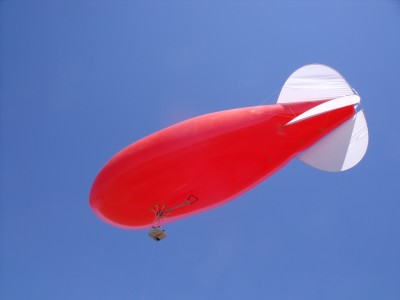Earlier this summer, a multi-institutional science team led by principal investigator James Smith from the National Center for Atmospheric Research (NCAR) visited the ARM Southern Great Plains site to conduct the New Particle Formation (NPF) Study. The NPF study focuses on the question of what variables determine the growth rate of newly formed particles, and how the evolution of aerosols particles impacts cloud processes. The team used an instrumented tethered balloon to obtain their data set and will use that data to develop models for nucleation and growth rates that can be incorporated in atmospheric aerosol models.
John Schatz, SGP Site Operations Manager, sent these pictures along to share their science. Follow the storyboard, learn, and enjoy!
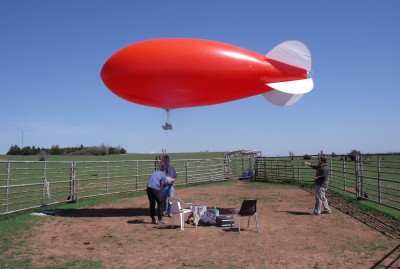
Getting ready for the launch. From left to right: Rod Ortega, John Ortega, Joe DePalma.
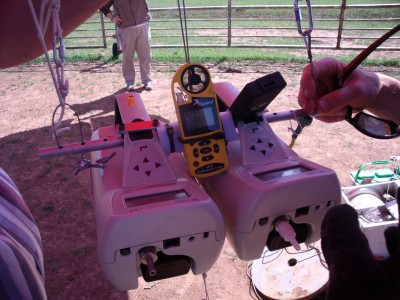
Counters, check! The two beige boxes are condensation particle counters, one set up to count all particles larger than 10 nanometers, and the other all particles larger than 20 nanometers. Gathering data this way allows the team to subtract the two to get the concentration of 10-20 nanometers diameter particles. The yellow instrument is a mini-weather station. The brown box is a GPS tracker, used to locate the blimp if it gets loose from the tether. Thank goodness that didn’t happen!
Up, up, and away! The blimp went as high as 900 meters above sea level, taking vertical profiles of aerosol concentration.
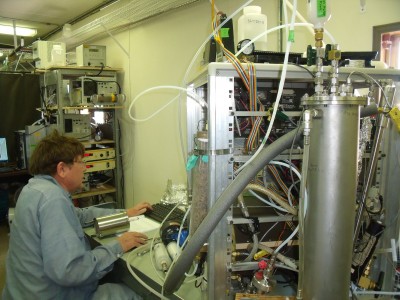
With data collected, Mark Stolzenburg, University of Minnesota, is in front of an instrument called a nano-hygroscopic tandem differential mobility analyzer (HTDMA)—similar to an aerosol observing system TDMA—built at the University. It measures the “wetness” of particles in the atmosphere.
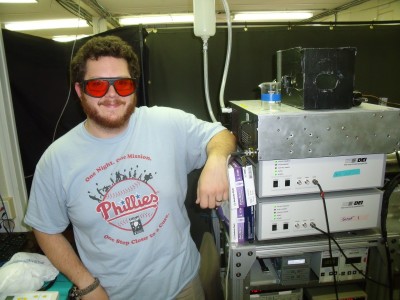
Joe DePalma, University of Delaware, poses with the nano-aerosol mass spectrometer (NAMS). NAMS measures the composition of the nanometer-sized particles collected using laser ablation mass spectrometry. Whew!
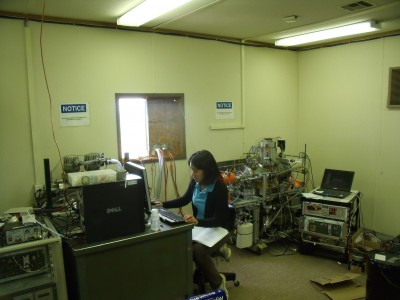
Cody Jen, University of Minnesota, uses the Minnesota Cluster chemical ionization mass spectrometry (CIMS,) a smaller version of the NCAR instrument. This instrument measures ambient gas-phase compounds. In the far corner is the ammonia phosphorus mass spectrometer (AmP-MS), an instrument that also uses a mass spectrometer to measure amines and ammonia in the air.


